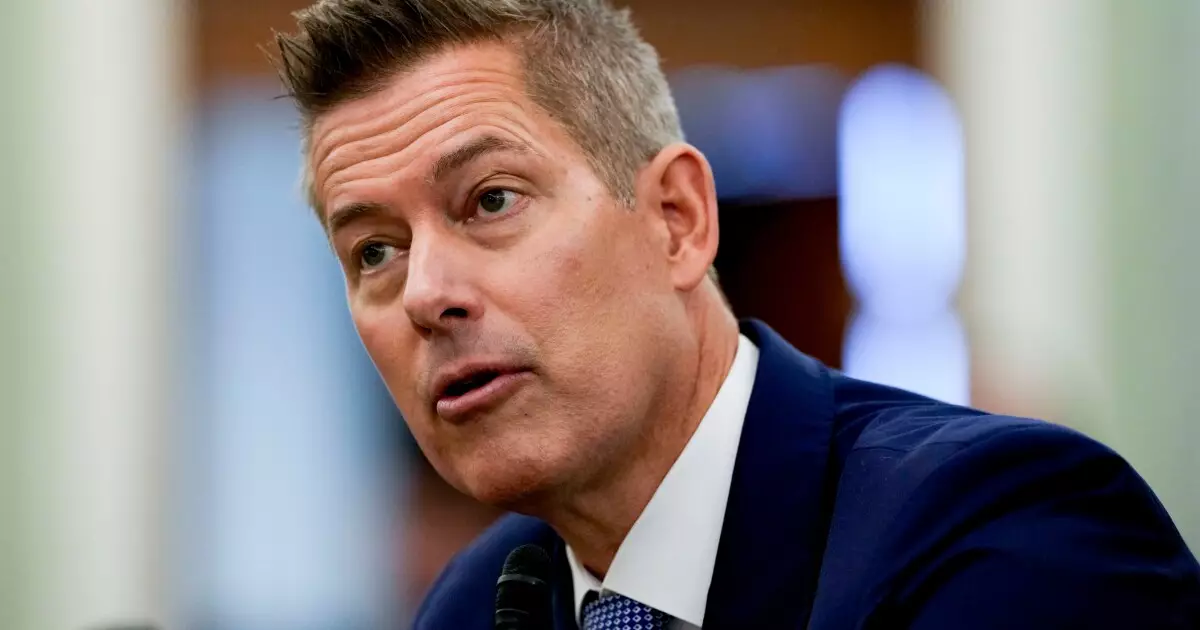The landscape of transportation funding and policy in the United States is undergoing a substantial transformation under the new leadership in the U.S. Department of Transportation (DOT). As outlined in a recent directive by Transportation Secretary Sean Duffy, there is a discernible shift towards aligning transportation projects with specific demographic trends and federal compliance issues. This article explores the implications of these changes, particularly how they reflect the broader objectives of the current administration while also considering the historical context of federal transportation funding.
The directive issued by Secretary Duffy marks a clear departure from previous administrations by introducing measures that prioritize transportation projects located in areas marked by high birth and marriage rates. This focus on demographic shifts represents an attempt to harness transportation funding as a tool for enhancing specific societal values. Additionally, the memo emphasizes adherence to federal immigration laws, indicating a strong stance on immigration issues that extends into federal funding decisions.
In aligning funding with federal opportunity zones—designated areas in need of economic revitalization—the strategy suggests that the new administration is actively seeking to stimulate economic growth in targeted regions. This approach not only aims to facilitate infrastructure improvement but also to direct resources toward areas that demonstrate potential for social and economic development.
An important aspect of the directive is its insistence on rigorous economic analysis and cost-benefit calculations as prerequisites for funding approval. By mandating these assessments, the DOT seeks to ensure that grants, loans, and contracts are not merely projects of local interest but contribute to the broader American economy. The emphasis on user-fee models further implies a strategic pivot towards sustainable funding sources, which could foster greater accountability within both state and local governments.
The incorporation of such economic criteria is undoubtedly reflective of an administration’s intention to mitigate inefficiencies and enhance the return on federal investment. However, this rigorous analytical approach also raises concerns about the bureaucratic challenges that may impede swift project implementation.
According to industry experts, while the new order appears to primarily target discretionary grant programs, it is crucial to recognize that state formula funds remain insulated from these developments due to their statutory nature. This distinction creates a dichotomy between programs reliant upon established formulas and those that are subject to the new political priorities, potentially leading to disparities in funding distributions.
The American Association of State Highway and Transportation Officials (AASHTO) has expressed an ongoing commitment to advancing a cooperative relationship with the new DOT leadership, recognizing that successful implementation of these priorities necessitates effective dialogue. The nuances involved in maintaining existing funding streams while navigating new directives suggest a challenging endeavor for state agencies striving to meet local transportation needs.
In a stark critique of previous policies, Secretary Duffy underscored the intent to eliminate certain elements cultivated during the Biden administration, particularly those perceived to align with climate change activism and partisan goals. This emphasis on “getting back to the basics” serves dual purposes: it positions the current administration as a champion of pragmatic solutions in transportation and reflects a broader political narrative focused on economic revitalization devoid of perceived ideological encumbrances.
Duffy’s pledge to reduce bureaucratic red tape resonates with many stakeholders who have long called for a more streamlined federal-state partnership. His comments regarding granting states greater autonomy and authority signal a potential realignment of how federal and state bodies will cooperate in the coming years.
The recent directive from the U.S. Department of Transportation epitomizes a strategic recalibration of federal funding principles as influenced by demographic and economic considerations. This shift presents both opportunities and challenges for transportation infrastructure development across the country.
As the administration seeks to promote alignment between federal priorities and local realities, stakeholders will need to consider the balance between effective project execution and adherence to new directives. This moment represents not only a change in policy but also an evolving transportation landscape that will require careful navigation as it aims to meet diverse societal needs in the years to come. The implications of these shifts are just beginning to unfold and will likely dictate the future of transportation infrastructure in America.

